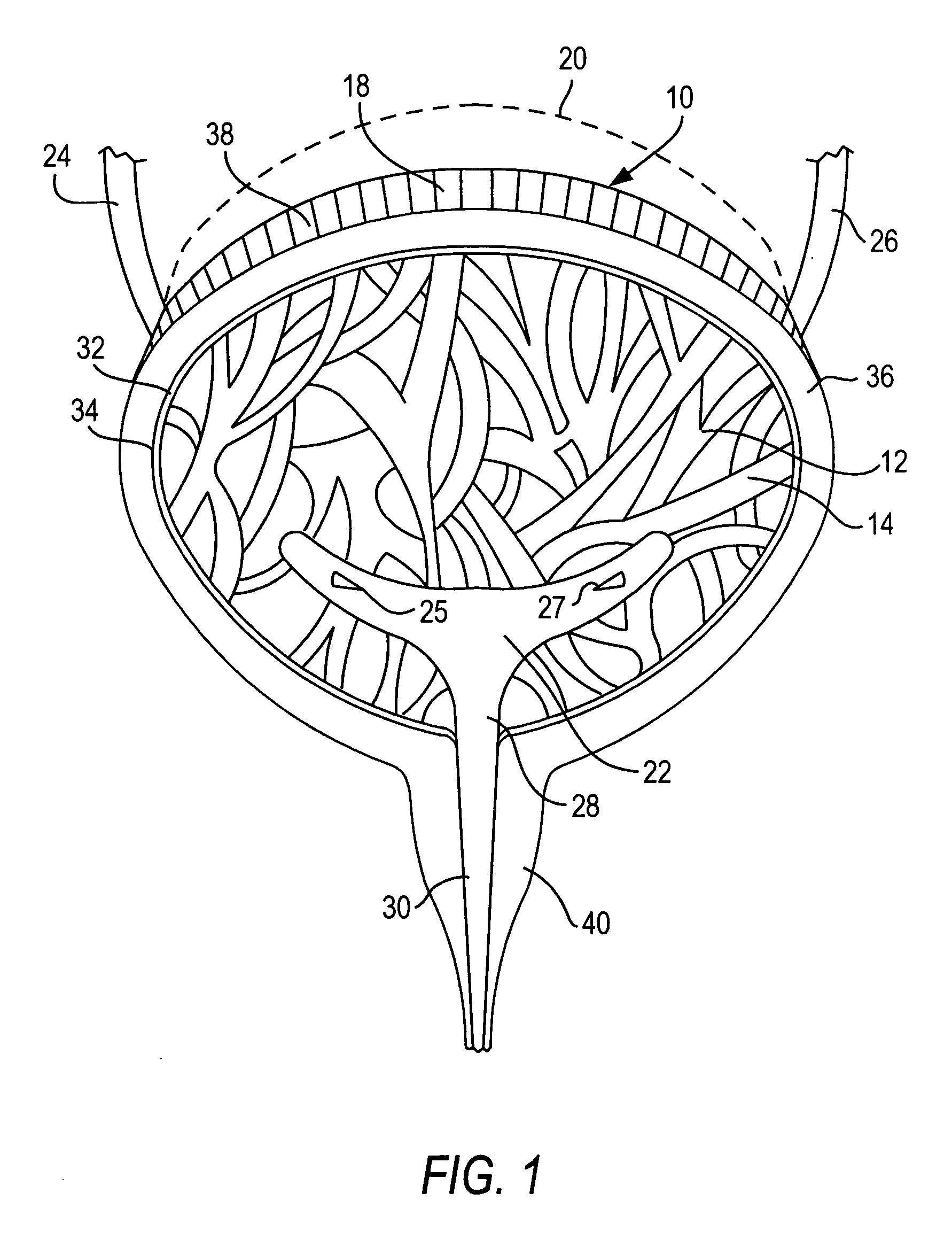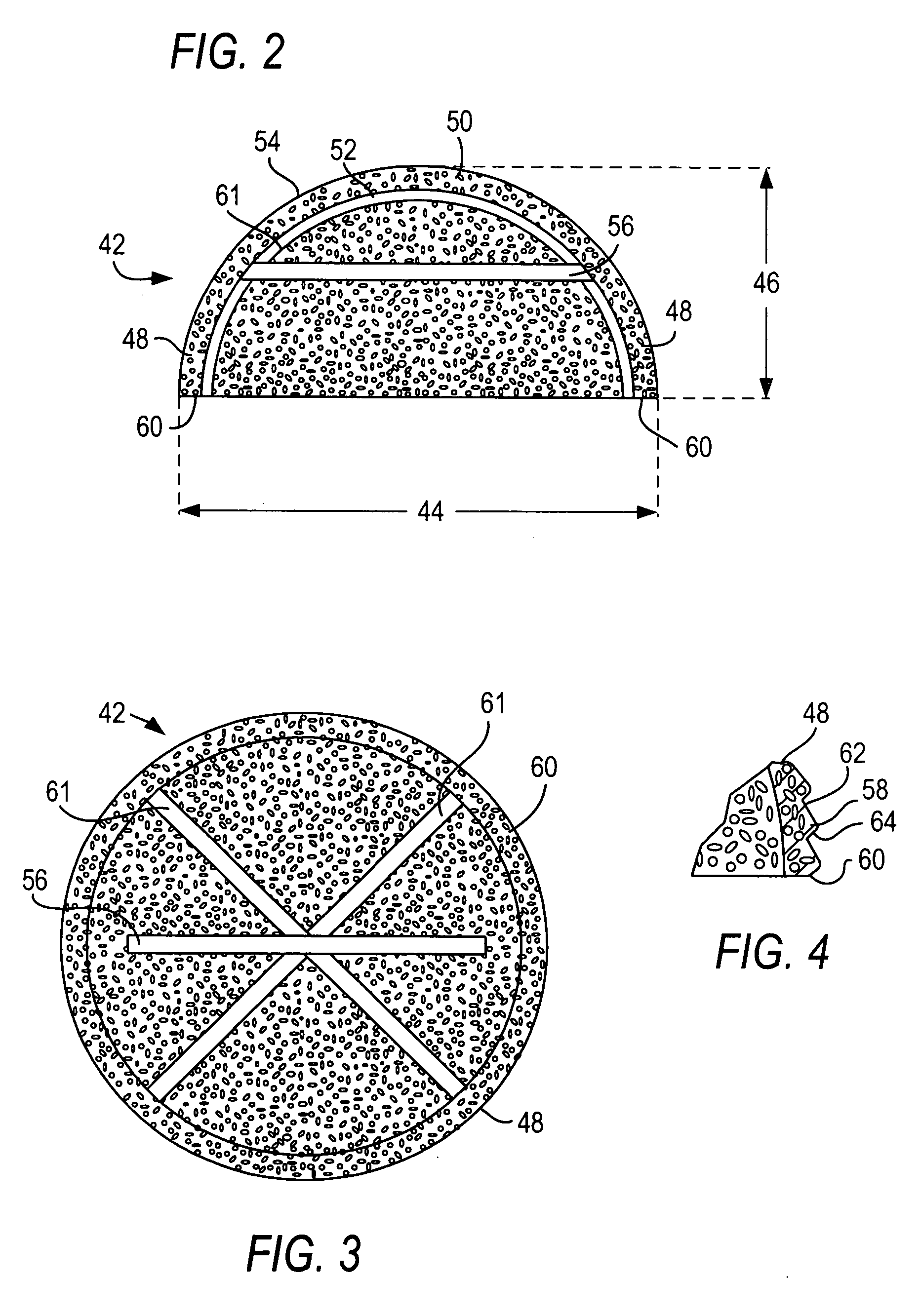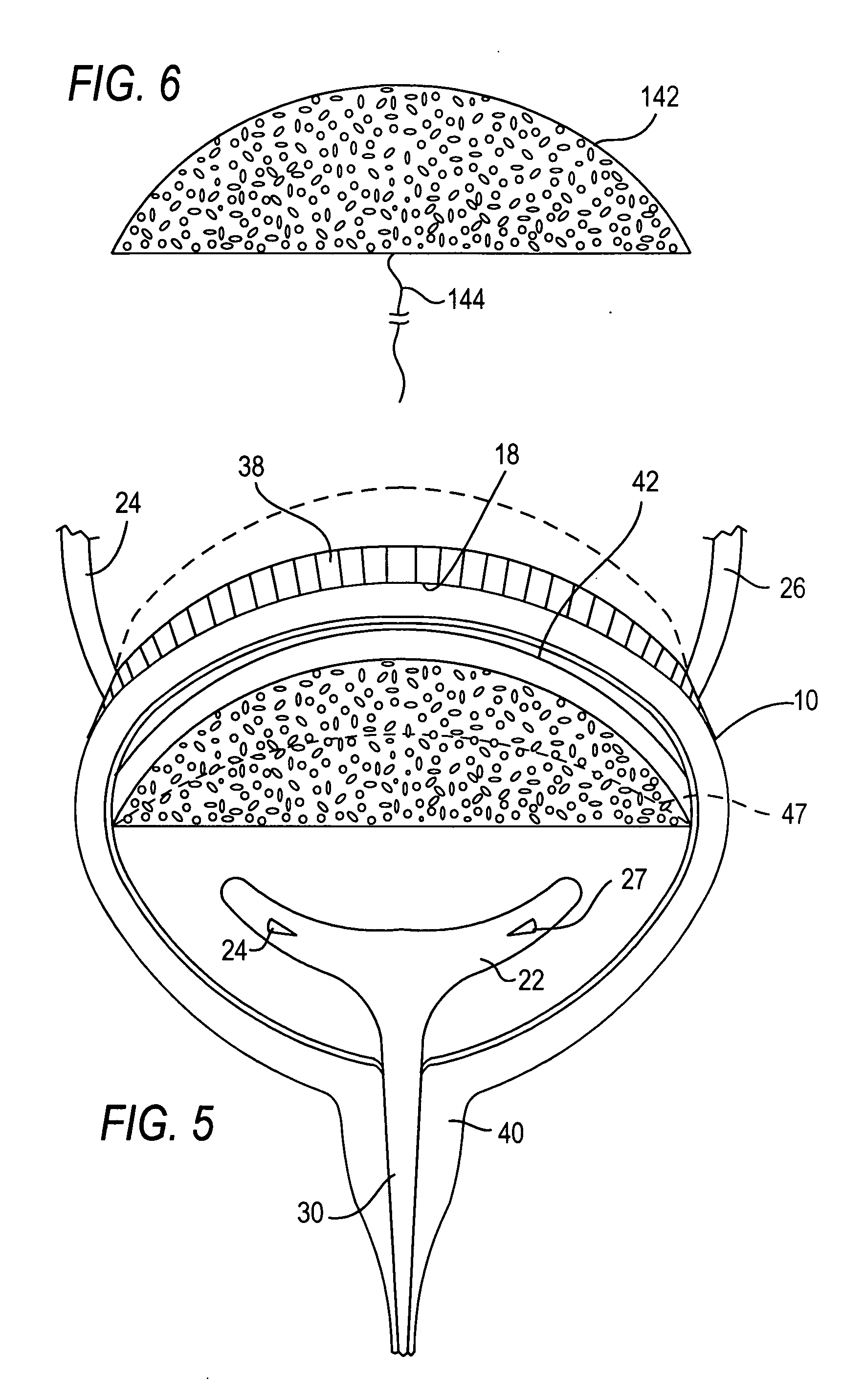Method and system for intravesicular delivery of therapeutic agents
- Summary
- Abstract
- Description
- Claims
- Application Information
AI Technical Summary
Benefits of technology
Problems solved by technology
Method used
Image
Examples
example 2
[0285] A cast film of polyurethane containing Ciprofloxacin was made by reacting hydrophilic polyurethane prepolymer (Urepol 1002A obtained from Envirochem) with distilled water. The reacting mixture was spread in a thin film over a glass petri dish. The film was cured overnight and dried to leave a thin film of polyurethane containing Ciprofloxacin. The resultant drug carrying film was further vacuum-dried. The drug loading was measured to be 0.06 gms per 1 gm of coated film, i.e. 6.0 wt %.
[0286] The drug carrying film was placed in phosphate buffer at 37 C and a pH of 7.4 and the Ciprofloxacin in vitro release was measured. The results are presented in Table below:
3 Core Cumulative Release, loading, % at Day Lot No: Drug wt % 1 3 4 J1168-018-7 Ciprofloxacin 6.0 15.7 16.8 29.28
[0287] The polyurethane film successfully demonstrated its ability release Ciprofloxacin over a period of time or show controlled release capabilities.
PUM
| Property | Measurement | Unit |
|---|---|---|
| Time | aaaaa | aaaaa |
| Fraction | aaaaa | aaaaa |
| Fraction | aaaaa | aaaaa |
Abstract
Description
Claims
Application Information
 Login to View More
Login to View More - R&D
- Intellectual Property
- Life Sciences
- Materials
- Tech Scout
- Unparalleled Data Quality
- Higher Quality Content
- 60% Fewer Hallucinations
Browse by: Latest US Patents, China's latest patents, Technical Efficacy Thesaurus, Application Domain, Technology Topic, Popular Technical Reports.
© 2025 PatSnap. All rights reserved.Legal|Privacy policy|Modern Slavery Act Transparency Statement|Sitemap|About US| Contact US: help@patsnap.com



